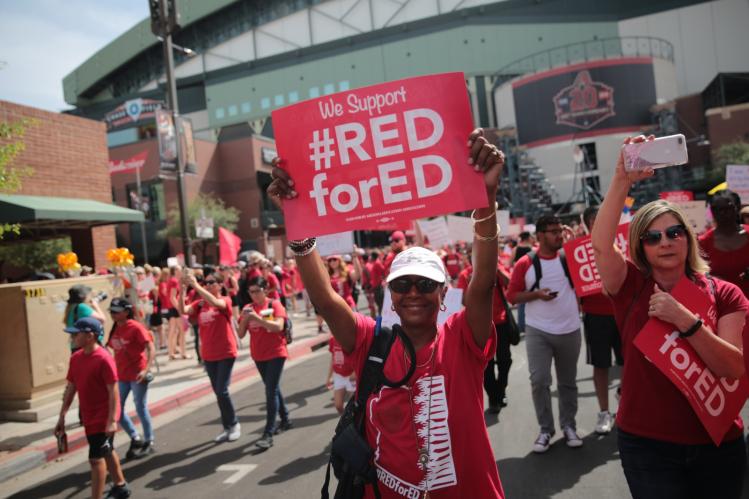
No writer is better equipped than Steven Greenhouse to assess how both American workers and the American labor movement are doing in the early twenty-first century. For more than twenty years, he crisscrossed the nation, covering workers and unions for the New York Times, proving himself a worthy successor to A. H. Raskin and William Serrin, who set the standard for labor journalism in their times. Like those predecessors, Greenhouse reported on union politics, organizing campaigns, conventions, and picket lines. But he also ventured beyond the conventional confines of his beat to chronicle the travails of everyday workers, from office cubicles to factory farms, from warehouses to slaughterhouses, describing the creative new forms of worker organizing he encountered outside traditional unions.
Freed from the quotidian demands of beat coverage by a retirement buyout, Greenhouse has spent the past five years freelancing important labor stories and stepping back to write his new book, Beaten Down, Worked Up: The Past, Present, and Future of American Labor. He opens with a string of disturbing vignettes that illustrate workers’ current struggles, including rampant wage and hour violations, deteriorating workplace-safety enforcement, unpredictable scheduling practices, stagnant wages, retirement insecurity, lack of paid sick or vacation days, and abusive management. These are not the kinds of stories we should expect to read with unemployment at a fifty-year low, yet they’re all too common in an economy in which power has shifted decisively toward employers and inequality continues to grow. They make clear that, as Greenhouse puts it, “something is fundamentally broken in the way many American employers treat their workers.”
Beaten Down, Worked Up can be seen as a sequel to Greenhouse’s 2008 book, The Big Squeeze: Tough Times for the American Worker. In that previous effort, he chronicled the rise of “lean and mean” management, the proliferation of outsourcing, the uncertainty that globalization has wrought on working-class lives, and the crumbling anachronism that is U.S. labor law. It all amounted to a prescient warning about the unsustainable erosion of the structures that gave security to workers’ lives. “Workers’ concerns have retreated from the nation’s consciousness,” he cautioned, and “if we don’t address those concerns, we do so at the workers’ peril—and our own.”
Much has changed for the worse for U.S. workers since Greenhouse sent The Big Squeeze to press. Six months after it was published, financial markets that had relied on over-leveraged workers to continue buying homes and consuming goods suddenly collapsed, plunging the nation into the Great Recession. The iPhone was just hitting the market then, and neither Uber nor the concept of the “platform economy” yet existed. Amazon was still primarily a money-losing bookseller. Union activists still hoped that Change to Win (CtW), the labor federation founded after the Service Employees International Union (SEIU) and allied unions broke away from the AFL-CIO in 2005, would jump-start new organizing efforts at large employers like Walmart. And many believed that the election of a Democratic president in 2008 would clear the way for the passage of the Employee Free Choice Act (EFCA), making it easier to join unions.
Beaten Down, Worked Up takes account of the way the “squeeze” Greenhouse described has turned into something closer to a stranglehold over the past decade. Scott Walker won the Wisconsin governorship in 2010 and promptly signed legislation stripping most of his state’s public employees of the right to bargain, ushering in an era of GOP assaults on public-sector unions. The gig economy transformed the way millions work. And unions now confront both a Supreme Court especially hostile to worker rights and a Labor Department run by a Scalia. Influenced by such developments, Greenhouse now takes a harder line on management than he did in The Big Squeeze. In 2008, he counseled unions to “relinquish the view that the employer is always wrong whenever it wants to cut costs or expand a worker’s responsibilities,” and urged them to “cooperate (wisely) with management to help ensure that survival of the corporate operations and union members’ jobs.” It’s understandable that such advice is absent from Greenhouse’s new book. Recent years have shown that even when unions accede to cost-cutting, they get little in return, as the example of General Motors shows. After spending more than $10 billion on recent stock buybacks that enriched shareholders (and executives), GM shuttered three plants and precipitated a prolonged strike by claiming it could not afford to eliminate a two-tier wage it had forced on the United Auto Workers during the Great Recession. Tellingly, rather than calling for labor-management cooperation, this book closes with a chapter outlining “How Workers Can Regain Their Power.”
If Greenhouse is less inclined to trust employers’ good faith, he is also less sweeping in his prescriptions for labor. In The Big Squeeze, he urged bold movement-wide action, calling for the AFL-CIO and CtW to require their constituent unions to spend at least 25 percent of their budgets on organizing new workers or face expulsion from their respective labor federation. In Beaten Down, Worked Up, he eschews such movement-wide remedies to highlight hopeful initiatives such as SEIU’s Fight for $15, which has raised wages for millions of low-wage workers, and the #RedforEd movement, whose rank-and-file teachers often challenged their cautious union leaders. He also celebrates creative organizing models that have emerged outside the union movement, such as the Florida-based Coalition of Immokalee Workers, which has won significant improvements for tomato pickers, or Coworker.org, an online petition platform through which workers have pressured employers to address workplace grievances without the benefit of a union.
Greenhouse knows the obstacles to bold experimentation that unions face. Having covered the labor movement for decades, he is attentive to one of its age-old paradoxes: “Many union officials have little incentive to organize.” Organizing is expensive under a legal system that advantages management at every turn, and union leaders tend to be more responsive to the needs of the dues-paying members who elect them than to the hopes of yet-to-be-organized workers. Shifting money from servicing members’ contracts to organizing new members can be politically risky for union leaders. Consider SEIU’s Fight for $15. While it has helped shape the national conversation and raised the pay of millions (at the cost of millions of dollars in dues money), it has yet to unionize a single fast-food establishment. A union president less determined to defend the working poor than Mary Kay Henry—who credits Catholic social teaching as one of her inspirations—would likely never have carried on that fight so long. Even so, SEIU has been forced to cut back the resources it devotes to the campaign.
Amid so many challenges, Greenhouse takes care to underscore another significant initiative that has emerged within the traditional union movement: the efforts of public-sector workers—especially teachers—to reframe union struggles as fights to advance the common good. He singles out the pioneering work of the St. Paul Federation of Teachers under its former president Mary Cathryn Ricker, who now serves as Minnesota’s commissioner of education. As they grappled with recession-induced austerity in 2009, Ricker and her colleagues began building alliances with parents in an effort to improve St. Paul’s schools, and in subsequent years increasingly involved community allies in determining the priorities of the union’s bargaining campaigns. Chicago teachers took that same approach in an attention-grabbing 2012 strike that demanded “The Schools Chicago’s Children Deserve.” Both the #RedforEd walkouts of 2018 and the 2019 Los Angeles teachers’ strike followed similar strategies. In all these cases, unions fought not only for their members, but for the preservation and improvement of the public institutions in which they worked. They challenged austerity politics, tax giveaways, privatization, and even the corporate forces making it harder for private-sector workers to make a living. As part of their contract negotiations, St. Paul teachers demanded their school district cease doing business with banks that would foreclose on homes, a significant cause of students being displaced during the school year. In 2014, a number of these union pioneers and their community allies convened at Georgetown University and formed a network called Bargaining for the Common Good, which continues to grow.
As both the Fight for $15 and the struggles of public-sector workers illustrate, all efforts to improve the lot of workers, challenge corporate dominance, or arrest growing inequality must inevitably confront the realm of politics and public policy. That lesson is reinforced by Beaten Down, Worked Up’s historical chapters.
To give labor’s current troubles context, Greenhouse revisits the early twentieth century, when conditions in many ways resembled those we confront today: a weakened and marginalized labor movement excluded from the fastest growing parts of the economy; political parties hostage to corporate interests; courts biased against workers’ self-organization and collective action; and raging inequality. He follows the rise of the labor movement from the militant strikes of Lower East Side garment workers, to the creation of the industrial unions of the 1930s, to the organization of sanitation workers and other civil servants in the 1960s. He also limns labor’s decline, from the disastrous 1981 air traffic controllers’ strike to Janus v. AFSCME, the 2018 Supreme Court decision that struck a blow at public-sector union finances. Tracing the long arc of labor history allows him to center the decisive role that politics and public policy have played in determining both the success of organizing efforts and the quality of workers’ lives.
Greenhouse’s recognition of the determinative power of political institutions over workers’ lives shapes his conclusion. While he closes with a long list of possible mechanisms for restoring workers’ power, including laws allowing for sectoral bargaining and wage-setting boards, he notes that none of these is possible without reviving a truly democratic politics. “If we hope to create a more favorable environment for workers,” he writes, we “will first need to overhaul our campaign finance system.” The labor movement, in turn, must become “an outspoken leader in the fight for true democracy.”
These words hark back to the early twentieth century, when the labor movement shrewdly framed its cause as a fight for “industrial democracy.” Political democracy could not be preserved or extended in an economy dominated by powerful corporations, unionists rightly argued at the time, unless workers won some measure of democracy in the workplace. Sure enough, when millions did win a degree of industrial democracy through the Wagner Act and union contracts, political democracy also expanded. It is no coincidence that the diminution of workers’ voice in their workplaces has been accompanied by an erosion of the quality of our democracy itself.
Today’s workers face steep challenges to gaining a greater democratic voice, both at work and in politics. The economy has been reshaped by global competition and the emergence of mammoth new monopolies, and the power to determine working conditions has often migrated away from direct employers and become lodged in financial markets and diffuse supply chains; indeed, the very categories of “employer” and “employee” are becoming contested. It is increasingly clear that unions and their allies need to adapt collective bargaining to these current realities if workers are to gain a democratic voice over their working conditions. Beaten Down, Worked Up is a timely reminder that the very future of American democracy depends in significant measure on whether or not that project succeeds.
Beaten Down, Worked Up
The Past, Present, and Future of American Labor
Steven Greenhouse
Knopf, $27.95, 416 pp.
Photo by Gage Skidmore
Please email comments to [email protected] and join the conversation on our Facebook page.
Previous Story
Into the Abyss
Next Story
Making America OK

